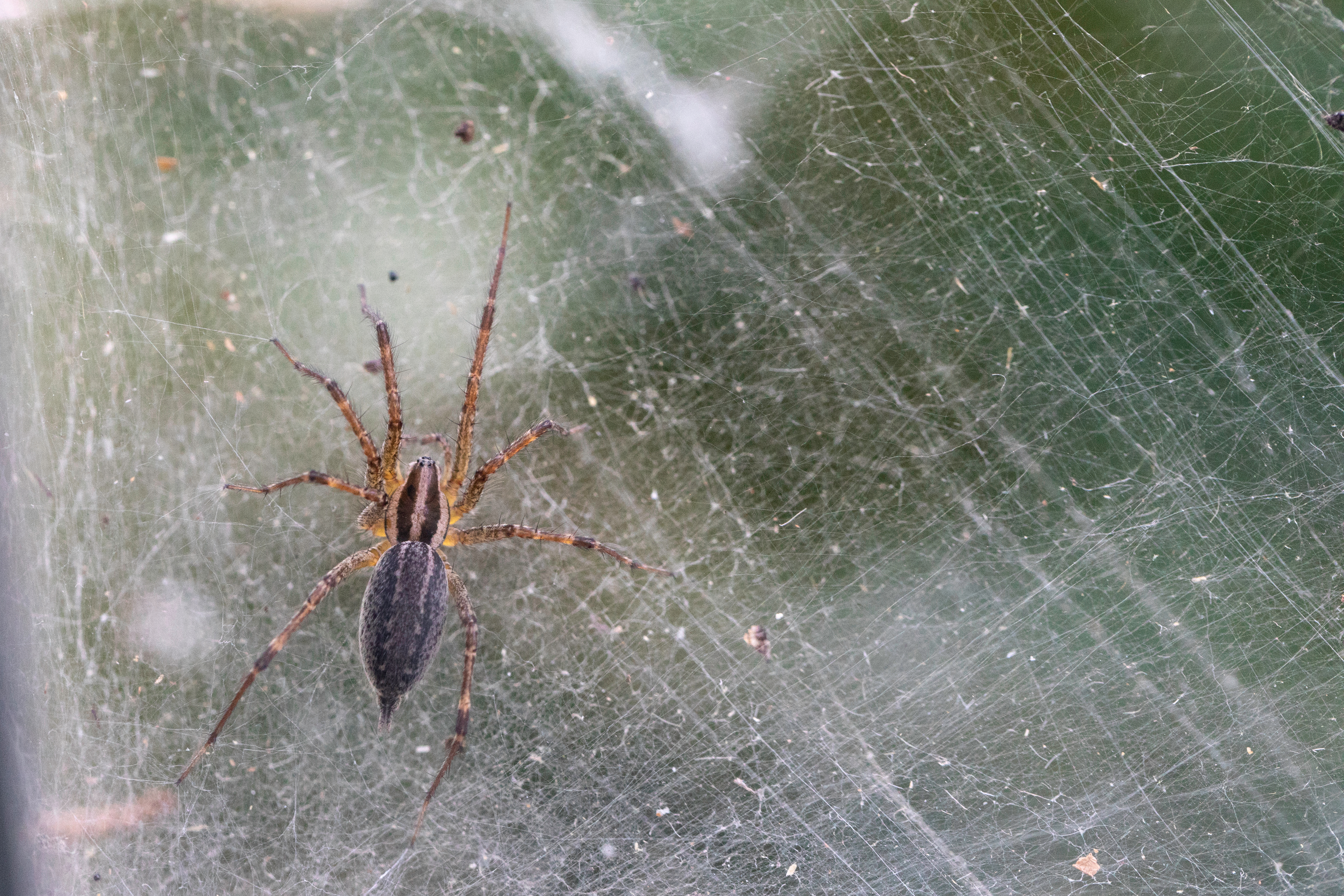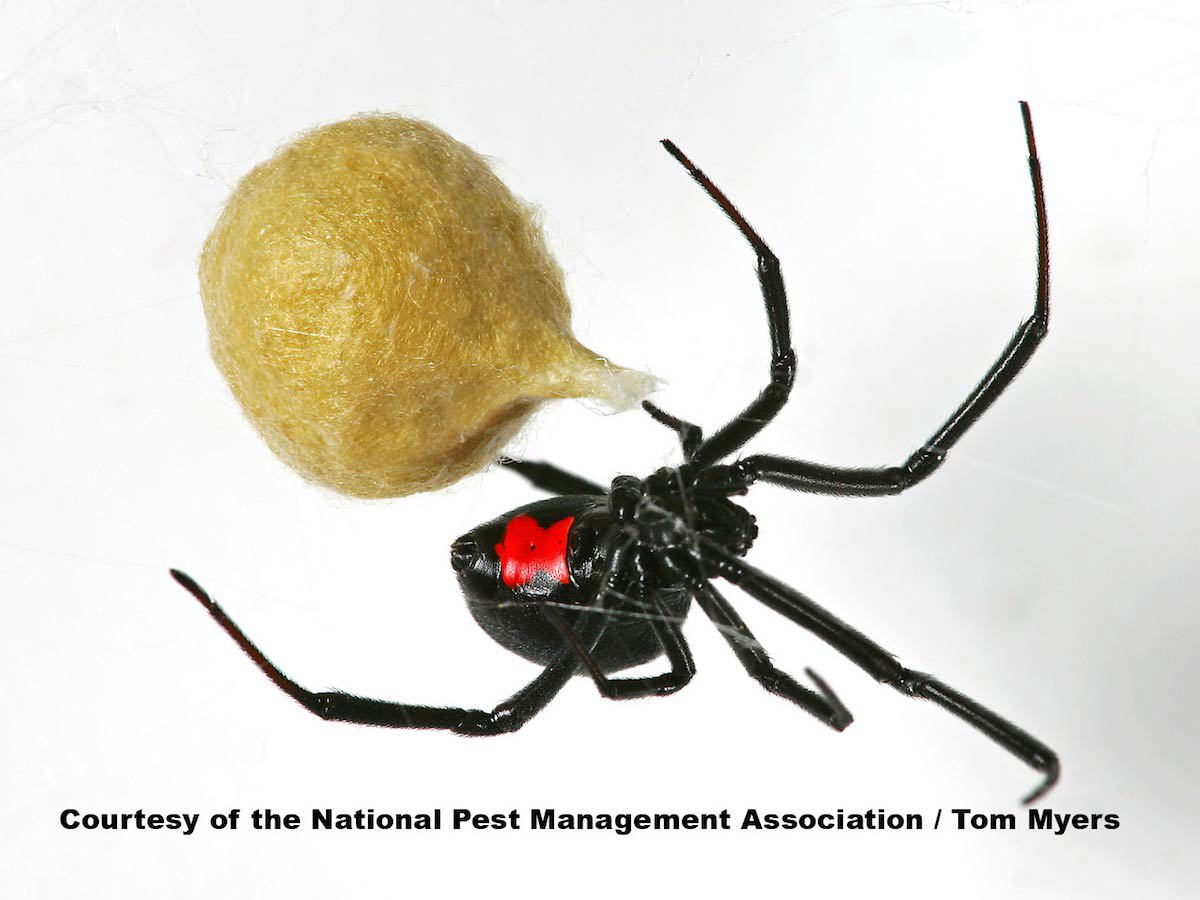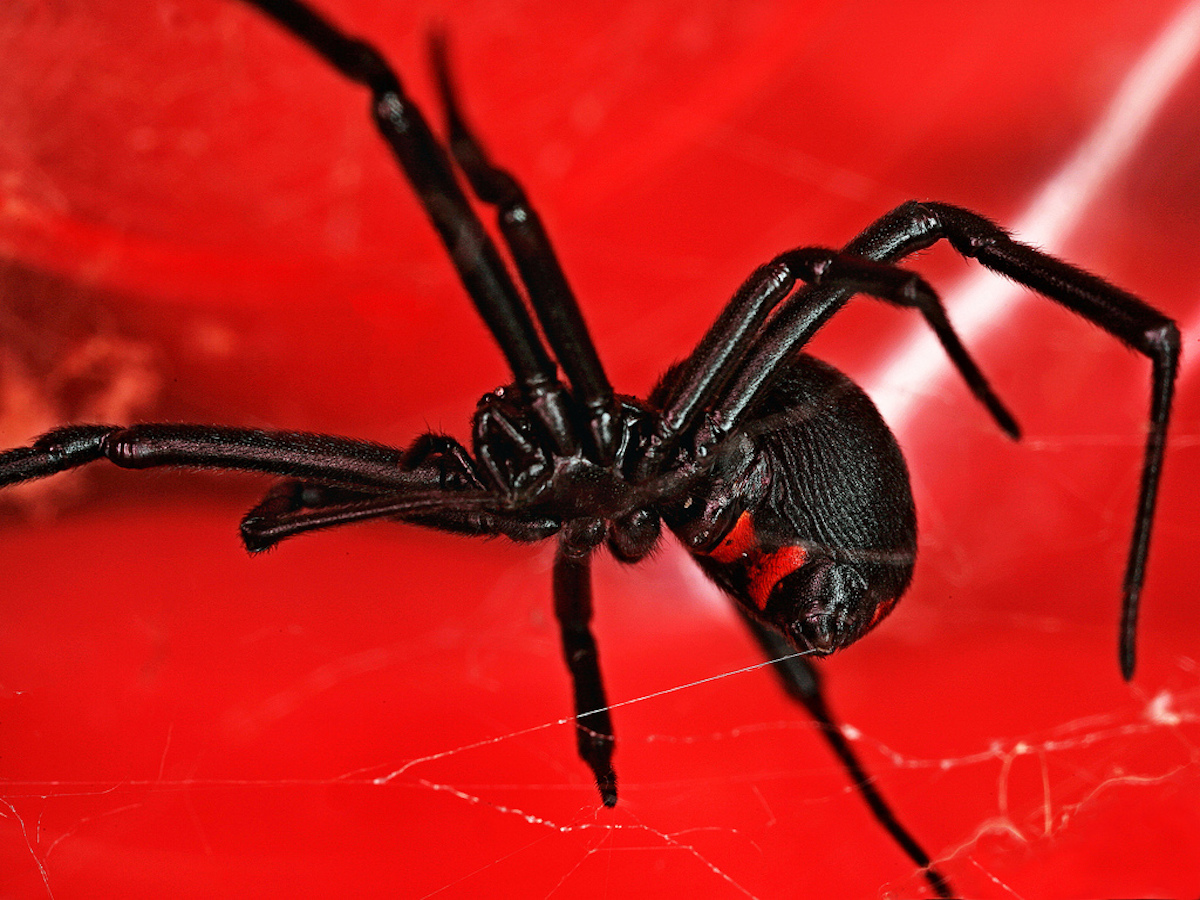Grass Spider Trichonephila clavata

Identification
Color: Often yellow, brown or cream-colored with two dark brownish bands running lengthwise across their cephalothorax and abdomen
Size: ½” to ¾” (excluding legs); males are slightly smaller than females
Legs: 8
Antennae: No
Shape: Spinnerets are long
Region: They are native to North America and can be found throughout natural and manmade habitats
What is a Grass Spider?
As their name suggests, grass spiders are frequently found in grassy areas but sometimes make their way indoors searching for food. Often confused with wolf spiders or hobo spiders, this spider species is a small, shy, and relatively harmless creature that builds its funnel-shaped webs on short grasses or on windowsills. What this spider lacks in size, it makes up for in speed as they are known to be fast runners.
What Do Grass Spiders Look Like?
Grass spiders are often yellow, brown or cream-colored, and they have two dark brownish bands running lengthwise across their cephalothorax and abdomen. These spiders have long spinnerets, and their eyes are arranged in three rows, with two on top, four in the middle and two on the bottom. Excluding their legs, grass spiders average at about ½ inch to ¾ inch in size, with the male spiders being slightly smaller than their female counterpart.
Grass spiders are nocturnal creatures. They are primarily active at night, allowing them to avoid daytime predators and easily sneak up on their prey when hunting. Grass spiders build their nests in funnel webs that are often noticed more than the spider itself. However, they do not use their webs to catch their prey as it lacks adhesive ability.
Native to North America, grass spiders can be found throughout natural and manmade habitats. They prefer grasslands and forests but are also commonly seen in lawns. The webs from grass spiders can make a yard appear unkempt and neglected.
Grass spiders are quick hunters that help control the population of species they prey on, such as moths, beetles, and small butterflies. Young grass spiders and their eggs are often eaten by other predators. These spiders do not actively seek out humans, but they may bite when they feel threatened.
Grass spiders are not considered to be medically important or aggressive, and as such, bites are rare. Grass spiders have small fangs that make piercing through human skin difficult, but not impossible. As a result, those with thin skin, such as infants and the elderly, are at a greater risk. If left untreated, the venom from a grass spider bite can sometimes cause necrotic skin lesions and bacterial infections, but this is rare.
To get rid of grass spiders in your home, be sure to mow the lawn frequently, keep tree branches and shrubbery well-trimmed, and seal cracks on the outside of the house. It is also important to tidy up after meals and not leave pet food out for extended periods to avoid bringing these spiders indoors.
If you notice or suspect a spider infestation in your home, contact a qualified pest control professional to address the situation.






